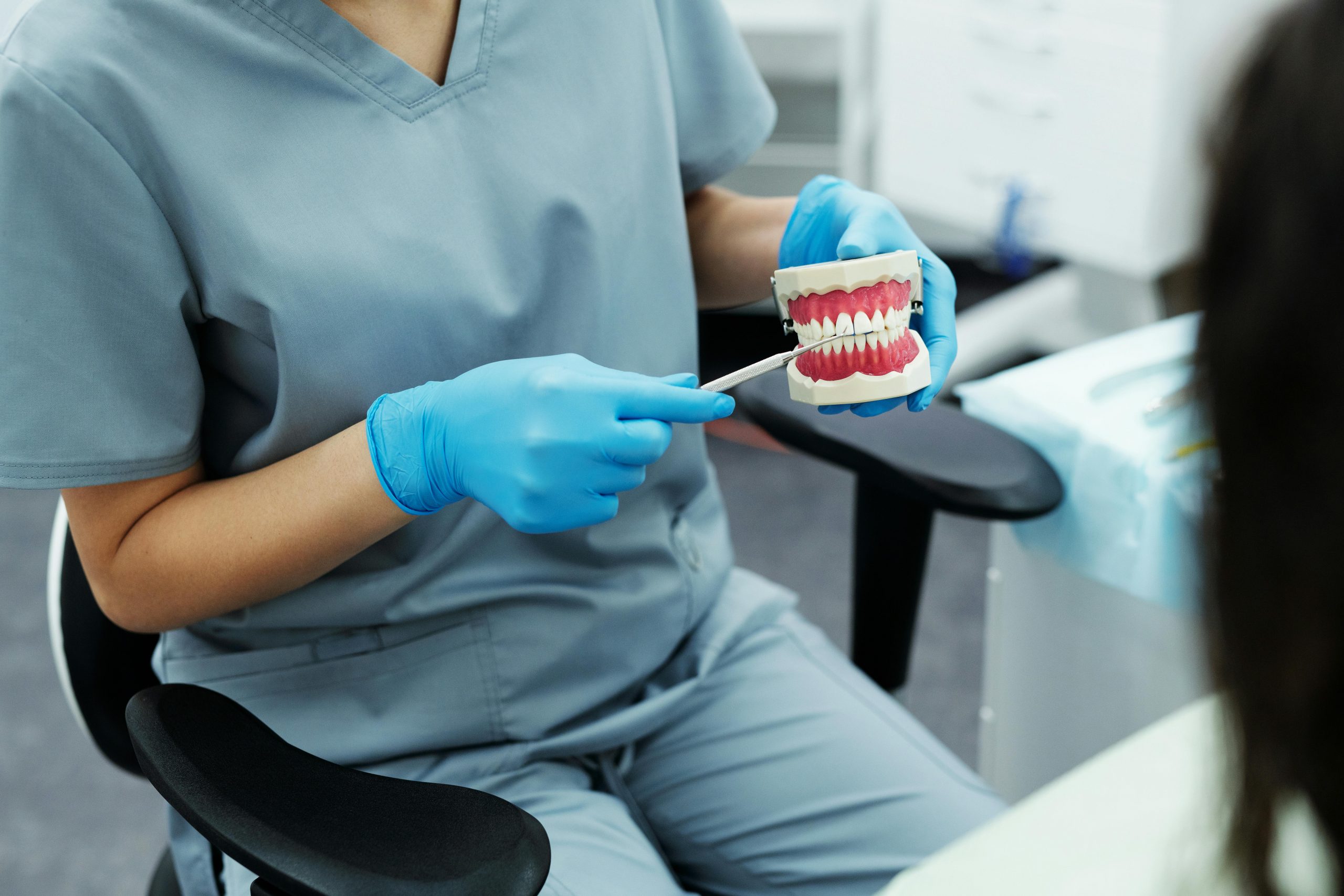Wisdom teeth are one of the most talked-about topics in dental care. Many people have theirs removed in their late teens or early 20s, often because of pain, crowding, or infection. But sometimes, after the extraction, people report feeling pressure or seeing new tooth growth in the back of the mouth. This leads to one of the most common questions: Can wisdom teeth grow back?
The short answer is no—your wisdom teeth cannot grow back once they have been completely removed. However, there are situations where it may feel like they’re returning, or where a tooth-like structure appears after an extraction. Understanding why this happens can help you know what to expect and when to see a dentist.
This complete guide will explain why wisdom teeth can’t regrow, what may cause the feeling of “new growth,” the rare cases of extra teeth, how extraction works, and how to protect your oral health long-term.
What Are Wisdom Teeth?

Wisdom teeth are your third molars, located at the very back of your mouth. Most people develop them between ages 17 and 25, which is why dentists often monitor teenagers closely during dental checkups.
Why Wisdom Teeth Develop
Wisdom teeth were useful thousands of years ago, when humans needed extra molars to chew tough foods like roots, bark, and raw meat. Today’s softer diets and smaller jaws mean most people don’t have room for these extra teeth.
Why Wisdom Teeth Are Often Removed
Dentists may recommend removal if wisdom teeth:
- grow at an angle
- don’t fully break through the gums
- cause pain or swelling
- push against other teeth
- trap bacteria and cause infections
- lead to cysts or jaw problems
Because these issues are common, wisdom teeth removal has become a routine dental procedure.
Can Wisdom Teeth Grow Back? The Truth
Once a wisdom tooth is fully extracted—meaning the dentist removes the entire tooth, including the roots—it cannot grow back. Adult teeth do not regenerate the way baby teeth do.
However, many people ask, can wisdom teeth grow back? When they feel sensations or notice changes in the back of the mouth. In almost all cases, something else is happening.
Here are the possible explanations.
1. You Have Supernumerary Teeth (Extra Teeth)
This is the #1 reason someone may feel like their wisdom teeth are growing back.
What Are Supernumerary Teeth?
Supernumerary teeth are extra teeth that some people naturally develop. They can appear anywhere in the mouth, including behind the molars. They are rare but absolutely possible.
- The condition is called hyperdontia.
- These extra teeth are often irregular in shape.
- They may grow after wisdom teeth removal, making it seem like the old teeth returned.
If an extra tooth appears where a wisdom tooth once was, it may require removal as well.
2. The Wisdom Tooth Was Not Fully Removed
Sometimes, a tiny portion of the tooth root may remain in the jaw after extraction. This is not usually intentional; it may happen if:
- the tooth breaks during extraction
- the roots are curved
- the tooth is deeply impacted
- the dentist chooses to leave a small fragment to avoid nerve damage
Can a Root Fragment Continue Growing?
No. A root fragment cannot grow into a full tooth.
However, the gum tissue around it can swell, creating the feeling of a new tooth pushing through.
In rare cases, the root fragment may:
- move slightly toward the surface
- cause irritation
- lead to infection
If this happens, your dentist may decide to remove the fragment.
3. You Are Feeling Growth of a Nearby Tooth
Occasionally, what feels like a regrowing wisdom tooth is simply pressure from:
- a second molar shifting
- gum tissue healing
- bone regrowing in the extraction site
Your jawbone naturally fills in the space where the tooth was. As it heals, you may feel pressure or movement that mimics tooth eruption.
4. You Actually Never Removed All Wisdom Teeth
Some people assume all four were removed, but only two or three were taken out. This can happen if:
- the person had surgery years earlier and forgot
- only the troublesome teeth were removed
- the other wisdom teeth were not yet visible during earlier X-rays
When the remaining wisdom tooth begins to erupt years later, it may feel like regrowth.
Do Wisdom Teeth Grow Back After Being Pulled?
No. Once the entire tooth structure is removed, it cannot regenerate.
Why It Sometimes Feels Like Wisdom Teeth Are Returning

Even without regrowth, certain sensations around the extraction site can make you think your wisdom teeth are coming back.
Common feelings mistaken for regrowth include:
- Pressure in the gums
- Soreness near the back of the mouth
- Jaw tension from shifting teeth
- Hard lumps from bone healing
- Gum irritation from food debris
- Sinus pressure (for upper wisdom teeth)
These sensations are normal, especially months after surgery. But if they last more than a few days or become painful, a dental visit is recommended.
Understanding Wisdom Tooth Extraction
To understand why wisdom teeth can’t grow back, it helps to know how removal works.
The Extraction Process
When a dentist removes a wisdom tooth, they:
- Numb the area
- Make a small opening in the gum (if needed)
- Remove the whole tooth
- Clean out the socket
- Stitch the gum closed
- Allow the socket to heal with bone over time
Because the entire tooth—including the root—is taken out, nothing is left that could regrow.
Supernumerary Teeth: The Only Real “Regrowth” Scenario
If you ever see a new tooth appear after a wisdom tooth extraction, it may be a supernumerary tooth, not a regrown wisdom tooth.
Signs you might have a supernumerary tooth:
- A tooth appears years after extractions
- It grows in an unusual direction
- It looks smaller or oddly shaped
- You feel pressure in your upper or lower jaw
- X-rays show an unexpected tooth bud
People with hyperdontia may have:
- One extra tooth (most common)
- Two or more extra teeth (less common)
- Impacted supernumerary teeth, visible only on X-rays
Your dentist can diagnose hyperdontia with an X-ray and recommend removal if needed.
Symptoms That Might Feel Like Regrowing Wisdom Teeth
Here are common symptoms often mistaken for regrowth:
- Gum Tenderness: When gums swell or get irritated, they may feel like something is pushing through.
- Bone Spicules: Small bone fragments may surface during healing. They can feel like sharp pieces of tooth.
- Shifting Teeth: After wisdom teeth are removed, surrounding teeth may shift and create pressure.
- Infection or Inflammation: If bacteria enter the extraction site, swelling can cause painful pressure.
- Cysts or Growths: Though rare, cysts can develop where the wisdom tooth once was.
If symptoms persist, always schedule a dental checkup.
How Dentists Confirm What’s Causing the Sensation
If you feel like a tooth is growing back, your dentist will likely recommend:
- A complete oral exam
- Dental X-rays
- Evaluation of your extraction history
- Checking for root fragments
- Assessing gum health
This helps determine whether you’re dealing with:
- bone growth
- gum irritation
- supernumerary teeth
- leftover tooth fragments
- normal jaw healing
Early diagnosis can prevent complications.
How to Care for Your Mouth After Wisdom Tooth Removal
Taking care of your mouth properly after extraction can help prevent sensations that feel like regrowth.
Good Post-Extraction Habits
- Rinse with warm salt water after 24 hours
- Avoid straws for at least a week
- Brush gently near the extraction site
- Keep food particles out of the area
- Attend all follow-up appointments
- Report persistent pain or swelling
Your mouth usually heals within 6–8 weeks, although full bone healing may take months.
Can New Wisdom Teeth Appear In Your 30s or 40s?
While rare, it is possible for wisdom teeth to erupt later in life. This is not regrowth—it simply means the teeth were impacted or dormant for years.
Late eruption may happen if:
- the tooth was deeply impacted
- it slowly shifts over time
- jaw structure changes
- previous X-rays didn’t reveal the tooth
If you experience new pressure or swelling years later, a dental exam is important.
When to Call a Dentist About Wisdom Tooth Concerns
Even though regrowth isn’t possible, you should seek professional care if you notice:
- ongoing pain at the back of the mouth
- swelling or redness in the gums
- difficulty opening your mouth
- pressure or movement behind your molars
- a hard bump under the gum
- a tooth-like structure appearing
- fever or signs of infection
These could indicate:
- a supernumerary tooth
- a root fragment moving
- an infection
- cyst formation
- bone growth or irritation
Early treatment lowers the risk of complications.
Preventing Problems After Wisdom Tooth Removal
The best way to prevent confusion or discomfort after extraction is to follow good oral care habits.
Daily Care Tips
- Brush twice a day
- Floss carefully around back molars
- Use an antibacterial mouthwash
- Keep up with regular dental checkups
- Get X-rays as recommended
Your dentist can monitor healing and ensure no unusual growth occurs.
Final Thoughts: Wisdom Teeth Cannot Grow Back
To summarize:
- Wisdom teeth do NOT grow back after full removal.
- Sensations of regrowth usually come from healing, shifting teeth, irritation, or bone growth.
- Supernumerary teeth are the only scenario where an extra tooth appears later.
- Regular dental checkups and X-rays help monitor your mouth for any unusual changes.
If you ever feel pressure, pain, or a tooth-like shape near an extraction site, it’s best to schedule a dental visit. While regrowth isn’t possible, your dentist can determine what’s happening and treat any issues early.